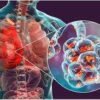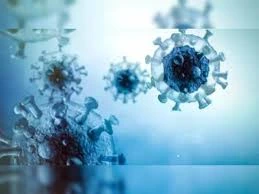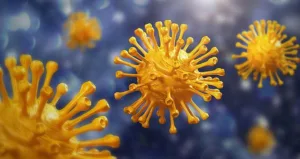
Pneumonia and Parkinson’s: Causes, Symptoms & Prevention
Understanding Pneumonia and Parkinson’s Disease: Causes, Symptoms, and Prevention
Diseases manifest in diverse ways, originating from infectious agents, genetic predisposition, or environmental influences. Among the most significant health concerns worldwide are pneumonia and Parkinson’s Disease, each presenting unique challenges in diagnosis, treatment, and prevention. Pneumonia is a severe respiratory infection that primarily affects vulnerable populations, while Parkinson’s Disease is a progressive neurological disorder that impairs motor functions and cognitive abilities. This article delves into the complexities of these diseases, their risk factors, symptoms, and preventive strategies to enhance awareness and health outcomes.
Pneumonia: A Life-Threatening Respiratory Condition
Prevalence and Impact
Pneumonia remains a leading cause of mortality, particularly in low-income countries where healthcare access is limited. It disproportionately affects young children under five and elderly individuals above 65 due to weakened immune defenses. This infection of lung tissue results in breathing difficulties as the alveoli become filled with fluid and pus, impairing oxygen exchange.

Causes and Transmission
Pneumonia arises from various infectious agents, including bacteria, viruses, and, in rare cases, fungi. The most common bacterial cause is Streptococcus pneumoniae, while viral pneumonia is often attributed to influenza and respiratory syncytial virus (RSV). Transmission occurs through airborne droplets when an infected person coughs or sneezes. However, fungal pneumonia, typically affecting immunocompromised individuals, is non-contagious and results from environmental exposure.
Symptoms and Complications
Symptoms of pneumonia range in severity and may include:
- High fever and chills
- Persistent cough with phlegm
- Chest pain during breathing or coughing
- Shortness of breath
- Fatigue and muscle aches
Severe cases may lead to systemic infections such as sepsis, respiratory failure, and fluid accumulation around the lungs (pleural effusion). If untreated, pneumonia can result in multi-organ damage and increased mortality risk.
Diagnosis and Treatment
Physicians diagnose pneumonia through clinical assessment, chest X-rays, and laboratory tests such as sputum analysis and bronchoscopy. These diagnostic tools help identify the causative microorganism, guiding appropriate treatment strategies. Management depends on the severity of the infection:
- Mild Cases: Treated with oral antibiotics, antiviral medications, rest, and hydration.
- Severe Cases: May require hospitalization, oxygen therapy, or intensive care unit (ICU) admission for ventilatory support.
Prevention Strategies
Preventing pneumonia involves multiple approaches:
- Vaccination: Immunization against pneumococcal bacteria and influenza significantly reduces infection risk.
- Hygiene Practices: Frequent handwashing and wearing masks help curb disease transmission.
- Healthy Lifestyle: Adequate sleep, regular exercise, and a balanced diet strengthen the immune system.
- Avoiding Smoking and Pollutants: Tobacco smoke and environmental toxins impair lung function, increasing susceptibility to infections.

Parkinson’s Disease: A Progressive Neurological Disorder
Causes and Risk Factors
Parkinson’s Disease results from the gradual degeneration of dopaminergic neurons in the substantia nigra, a brain region responsible for movement regulation. The exact cause remains unknown, but research indicates a combination of genetic and environmental factors. While some individuals inherit gene mutations linked to Parkinson’s, environmental toxins such as pesticides, heavy metals, and industrial chemicals also contribute to disease onset.
Symptoms and Progression
Parkinson’s Disease manifests in both motor and non-motor symptoms, progressing gradually over time. Common motor symptoms include:
- Resting tremors (shaking hands or limbs)
- Bradykinesia (slowed movement)
- Rigidity (stiffness in muscles)
- Postural instability (balance problems and frequent falls)
Non-motor symptoms significantly affect the patient’s quality of life and may include:
- Cognitive decline and memory loss
- Depression, anxiety, and mood disorders
- Sleep disturbances and fatigue
- Gastrointestinal issues such as constipation
The progression of Parkinson’s varies, with some individuals experiencing mild symptoms for years while others face rapid deterioration. Though the disease itself is not fatal, complications such as falls, choking, or pneumonia can shorten life expectancy.
Diagnosis and Treatment
Diagnosing Parkinson’s Disease relies on clinical evaluation, medical history, and imaging tests such as MRI and dopamine transporter scans (DaTscan). Currently, there is no cure, but treatments focus on symptom management:
- Medications: Levodopa and dopamine agonists help replenish dopamine levels, improving motor function.
- Physical and Occupational Therapy: These interventions enhance mobility, coordination, and daily functioning.
- Deep Brain Stimulation (DBS): A surgical procedure where electrodes are implanted in the brain to regulate abnormal neural activity.
- Lifestyle Modifications: Exercise, a balanced diet, and cognitive therapies slow disease progression and improve overall well-being.
Prevention and Risk Reduction
Although Parkinson’s Disease cannot be entirely prevented, adopting a healthy lifestyle can lower the risk:
- Regular Physical Activity: Exercises such as walking, cycling, and strength training improve motor control and cognitive health.
- Antioxidant-Rich Diet: Foods high in antioxidants, omega-3 fatty acids, and vitamins support brain health and reduce oxidative stress.
- Avoiding Neurotoxins: Limiting exposure to pesticides, industrial chemicals, and heavy metals minimizes environmental risks.
- Cognitive Engagement: Activities such as reading, puzzles, and social interactions enhance mental resilience.
Conclusion
Both pneumonia and Parkinson’s Disease present significant health challenges worldwide. While pneumonia predominantly affects vulnerable age groups and can be prevented through vaccination and hygiene, Parkinson’s Disease progresses gradually due to neurodegeneration influenced by genetic and environmental factors. Early diagnosis, appropriate medical interventions, and lifestyle modifications play a crucial role in managing these conditions. Public health awareness and research advancements continue to improve treatment options and preventive measures, ultimately enhancing the quality of life for those affected.









Add comment